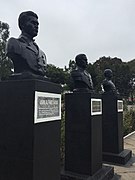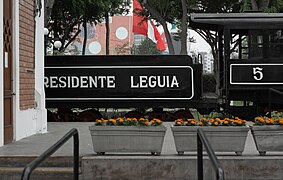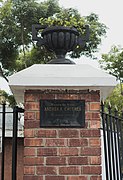
Manuel González de Candamo e Iriarte served as the 33rd President of Peru from 1903 until his death in 1904. He also served as Interim President of Peru, officially as the President of the Government Junta, from September 8, 1903, until his death the following year.

Andrés Avelino Cáceres Dorregaray served as the President of Peru two times during the 19th century, from 1886 to 1890 as the 27th President of Peru, and again from 1894 to 1895 as the 30th President of Peru. In Peru, he is considered a national hero for leading the resistance to Chilean occupation during the War of the Pacific (1879–1883), where he fought as a General in the Peruvian Army.
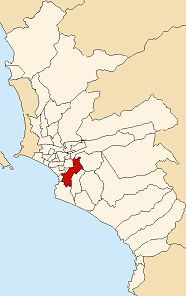
Santiago de Surco, commonly known simply as Surco, is a district of Lima, Peru. It is bordered on the north with the district of Ate Vitarte and La Molina; on the east with San Juan de Miraflores, on the west with San Borja, Surquillo, Miraflores and Barranco, and on the south with Chorrillos.
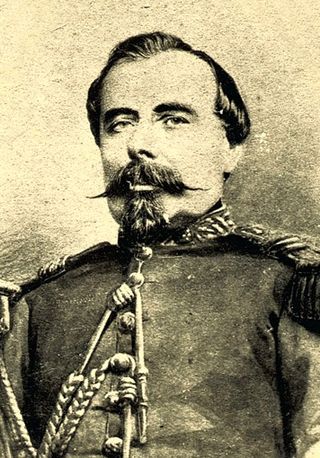
Francisco Bolognesi Cervantes was a Peruvian military colonel. He is considered a national hero in Peru and was declared patron of the Army of Peru by the government of Peru on January 2 of 1951.

Miguel Iglesias Pino de Arce was born on 11 June 1830 in Cajamarca, Peru, and died on 7 November 1909 in Lima, Peru. He was a Peruvian soldier, general, and politician who served as the 26th President of Peru from 1882 to 1885.
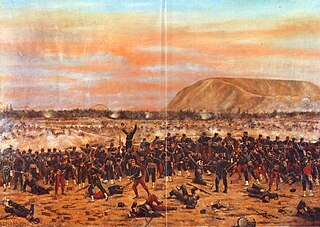
The Battle of Miraflores occurred on January 15, 1881 in the Miraflores District of Lima, Peru. It was an important battle during the War of the Pacific that was fought between Chile and the forces of Peru. The Chilean army led by Gen. Manuel Baquedano defeated the army commanded by Nicolás de Piérola guarding the second defensive line of the Peruvian capital city. Two days later, Lima, the capital city of Peru was occupied by Chilean troops. Gen. Baquedano's forces marched into Lima triumphant, while Peru's president and his officers fled into the interior, leaving the country without any government. Even after the fall of Lima, the war continued between the occupation army and the troops of Andres Caceres for another three years. During the occupation of Lima, Peru's National Library was burned, while a number of other monuments were ransacked by Chilean forces and taken as war trophies.

The Battle of Concepción was a battle fought between Chilean and Peruvian forces on July 9 and July 10, 1882, during the Sierra Campaign of the War of the Pacific. Heavily outnumbered, the Chilean detachment of 77 men under the command of Captain Ignacio Carrera Pinto was annihilated by a 1,300-strong Peruvian force, many of them armed with spears, commanded by Col. Juan Gasto and Ambrosio Salazar after a 27-hour fight in the small town of Concepción in the Peruvian Andes.

The Battle of San Juan, also known as the Battle of San Juan and Chorrillos, was the first of two battles in the Lima Campaign during the War of the Pacific, and was fought on 13 January 1881. This battle is really a group of smaller, yet fierce confrontations at the defensive strongholds of Villa, Chorrillos, Santiago de Surco, San Juan de Miraflores, Santa Teresa and Morro Solar. The Chilean army led by Gen. Manuel Baquedano inflicted a harsh defeat on the Peruvian army commanded by the Supreme Chief Nicolás de Piérola. The Chilean triumph eliminated the first defensive line guarding Lima, and almost obliterated the Peruvian army defending it.

The occupation of Lima by the Chilean Army in 1881-1883 was an event in the land campaign phase of the War of the Pacific (1879-1883).

After the naval campaign of the War of the Pacific was resolved, the Chilean terrestrial invasion began.

The Chilean occupation of Peru began on November 2, 1879, with the beginning of the Tarapacá campaign during the War of the Pacific. The Chilean Army successfully defeated the Peruvian Army and occupied the southern Peruvian territories of Tarapacá, Arica and Tacna. By January 1881, the Chilean army had reached Lima, and on January 17 of the same year, the occupation of Lima began.

The Lima campaign is the third land campaign of the War of the Pacific, carried out by Chile between December 1880 and January 1881. The campaign ended with the Chilean occupation of the Peruvian capital and the establishment of the Chilean authority in it and other surrounding territories, which would extend until 1883, with the end of the war.
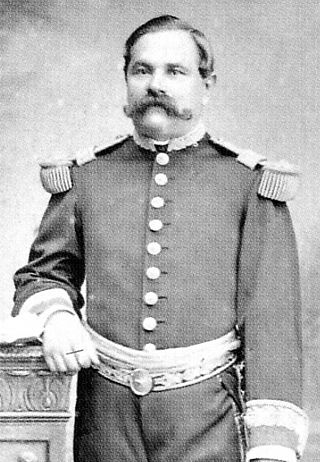
Pedro Silva Gil was a Peruvian brigadier general serving under the Peruvian Army. At the outbreak of the War of the Pacific in 1879 he was already retired, but he requested and obtained his return to service, being appointed Chief of Staff of the Defense Army of Lima. He fought in the Battles of San Juan and Miraflores in 1881. He then joined the resistance of the mountains led by General Andrés Avelino Cáceres and was killed in the Battle of Huamachuco.

Manuel Belisario Suárez y Vargas (1833-1910) was a Peruvian colonel and politician that was notable for serving in several battles of the War of the Pacific as well as holding several offices within the Congress of the Republic of Peru.

Justo Pastor Dávila Herrera (1829-1901) was a Peruvian colonel who was a primary commander throughout the Lima campaign as well as the Sierra campaign during the War of the Pacific as well as the Prefect of Tarapacá in 1879.

Martiniano Urriola Guzmán was a Chilean colonel of the War of the Pacific. He participated across many campaigns of the war as well as being one of the primary commanders of the Chilean North Operations Army.

Teodomiro A. Gutiérrez Cuevas, also known by his pseudonym Rumi Maqui, was a Peruvian Army Major and Indigenous leader who led a rebellion in Puno in 1915. After his imprisonment, he escaped his prison in Arequipa in January 1917.

José Agustín Bedoya y Valle was a Peruvian colonel of the War of the Pacific. Being a primary organizer of the Breña campaign, he led the Peruvian forces at the Battle of San Jerónimo.

Andrés Avelino Cáceres Museum is a war museum located at a building formerly used as a train station at the Parque Reducto № 2 in Miraflores District, Lima, Peru. It is named after Marshal Andrés Avelino Cáceres, who participated at the park's defense during the War of the Pacific, then used as a redoubt.



